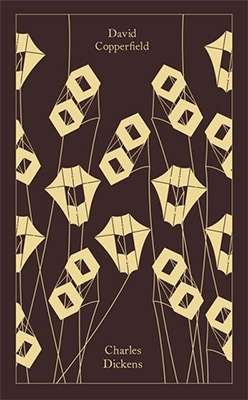David Copperfield

Editorial Penguin UK
Colección Clothbound Classics, Número 0
Fecha de edición mayo 2014 · Edición nº 1
Idioma inglés
EAN 9780141394640
1024 páginas
Libro
encuadernado en tapa dura
Resumen del libro
Dickens' great coming-of-age novel, now in a beautiful clothbound Penguin edition. This is the novel Dickens regarded as his 'favourite child' and is considered his most autobiographical. As David recounts his experiences from childhood to the discovery of his vocation as a successful novelist, Dickens draws openly and revealingly on his own life.
Among the gloriously vivid cast of characters are Rosa Dartle, Dora, Steerforth, and the 'umble Uriah Heep, along with Mr Micawber, a portrait of Dickens' own father which evokes a mixture of love, nostalgia and guilt. Dickens' great Bildungsroman (based, in part, on his own boyhood) is a work filled with life, both comic and tragic. Charles Dickens (1812-70) had his first, astounding success with his first novel The Pickwick Papers and never looked back.
In an extraordinarily full life he wrote, campaigned and spoke on a huge range of issues, and was involved in many of the key aspects of Victorian life, by turns cajoling, moving and irritating. He completed fourteen full-length novels and volume after volume of journalism. Of all his many works, he called David Copperfield his 'favourite child'.
Biografía del autor
Charles Dickens (Portsmuth, 1812 Gadshill, 1870) ha llegado hasta nosotros como el autor más importante e influyente de la literatura victoriana. Sus obras y su peripecia personal, íntimamente relacionadas, plasmaron no sólo el pulso social de su época, también el terrible estado moral de una sociedad atrapada en la desigualdad y las convenciones. Dickens experimentó la miseria, el éxito popular, la cárcel, el hambre... sólo logró cumplir con el más íntimo de sus anhelos, la libertad, entregándose a la literatura. Aunque muchas de sus obras gozaron de un extraordinario favor popular, baste decir que muchas de ellas fueron publicadas por entregas, en formato folletín; serían las críticas entusiastas de George Gissing y G. K. Chesterton las que encumbrarían a Dickens como el autor más importante de la literatura inglesa del siglo XIX.








